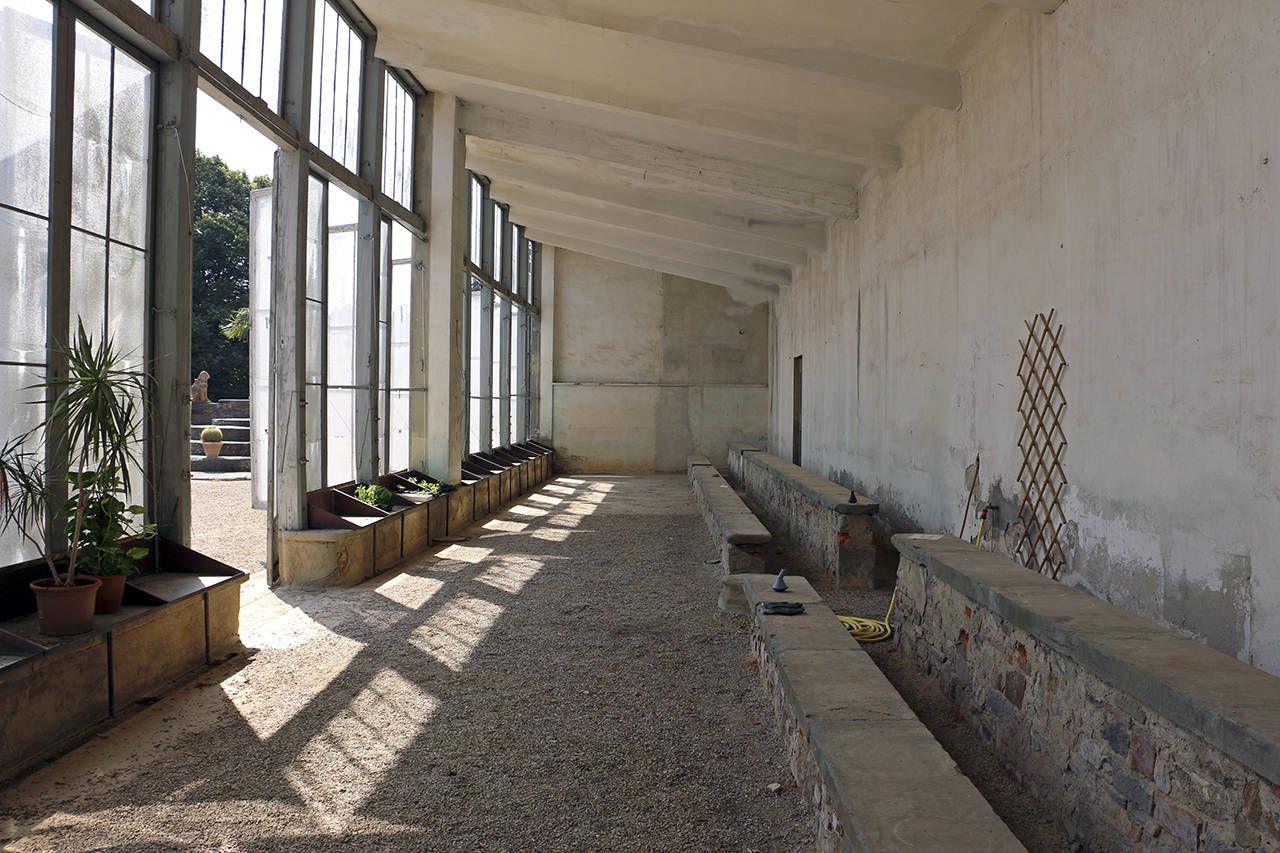By Mary Shane
WSU Master Gardener
Garden conservatories have been an institution around the world since the days when landowners in China and the Roman Empire sought ways to keep their exotic plant species alive during the cold winter months.
As early as the 16th century, farmers grew Mediterranean fruits and vegetables as far north as the Netherlands, using “fruit walls.” During daylight hours the walls absorbed the sun’s heat, which would then be released at night. Fruit trees were planted a distance from the walls to allow for root growth and good air circulation.
Not long after, gardeners learned to “espalier” the fruit trees. This method used a trellis to shape and form trees flat against those walls, exposing their limbs directly to the stored heat.
Later, Italians built simple structures to house their lemons and oranges during the cold season. Preservation of citrus and other tender plants started out as crudely as building a pergola over potted plants or beds, or simply moving potted plants indoors for the cold season. The structures were known in Italy as “limonaia.”
The limonaia at the Boboli Gardens, located in eastern Florence, was begun in the 1770s. It still houses hundreds of citrus plants during the winter months, which are then placed around the garden between May and October.
Farther north in Europe, the preservation of orange trees became the trend with special-purpose buildings built to protect the citrus. “Orangeries” were typically enclosed structures built with wood, brick or stone with tall vertical windows on the south walls.
The fashion for orangeries blossomed in the 1600s, with the introduction of oranges to cooler parts of Europe. The Heidelberg orangerie housed over 400 trees during the winter months. It was dismantled after Easter each year, then rebuilt the following autumn.
By the early 18th century, the Dutch — using new technologies in glass production — developed greenhouses with windows sloping to the south to help diffuse the sunlight.
In the early part of the 19th century, the conservatory made its way into the public life of the great cities of the time. The Industrial Revolution, coupled with the Victorian vision of improvement for common folk, led to the building of public conservatories.
The private conservatory evolved into an elegant setting in which visitors might enjoy the charm of a palm forest or a lotus pool in midwinter. At its height, the popularity of conservatories led to an explosion in demand for conservatory designers and builders, producing a glittering array of architectural forms in glass and steel.
However, the fascination with conservatories began to fade by the early part of the 20th century and eventually disappeared. The austerity of the war years and the Great Depression left little in the way of funds or free time for the enjoyment of indoor gardens. The glass houses were abandoned or destroyed.
Sunrooms appeared when energy conservation became important in the 1970s and 1980s. These were not so much conservatories, but rather sunny living spaces attached to the home.
Today, visitors to Kew Gardens in southwest London can enjoy as many as eight conservatories or garden houses. The Palm House was completed in 1843. As its name implies, the conservatory houses palms and other tropical and subtropical plants. The nave of the greenhouse is 30 feet tall so that visitors can see the trees’ crowns.
Probably the most photographed conservatory in Kew Gardens is the world’s largest surviving Victorian structure, the Temperate House. It covers more than an acre.
In the United States there are many distinctive conservatories, including the U.S. Botanical Garden on the Capitol grounds in Washington, D.C. It is the oldest continually operated conservatory in the United States.
Washington state has a modern version of the conservatory: the “biospheres” at Amazon’s Seattle headquarters. The spheres hold 40,000 plants from 50 countries and are divided into three areas, with the western and eastern domes split into Old World and New World displays. It is open to the public through weekly tours.
Closer to home is the W.W. Seymour Conservatory in Tacoma’s Wright Park. It houses over 700 mature trees, representing about 100 native and exotic species. The conservatory also features colorful seasonal floral displays.
Conservatories around have made possible the preservation and conservation of plant species. You’ll have fun if you immerse yourself in the fascinating world of the world’s glass houses.
Mary Shane finished WSU Master Gardener training in 1998. She gardens on a third of an acre overlooking the Sylvia Creek Valley.


